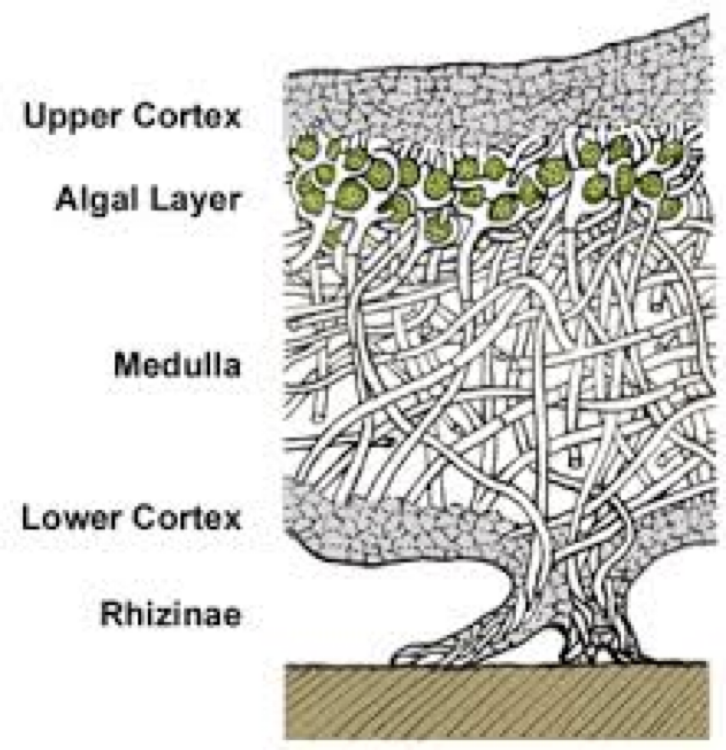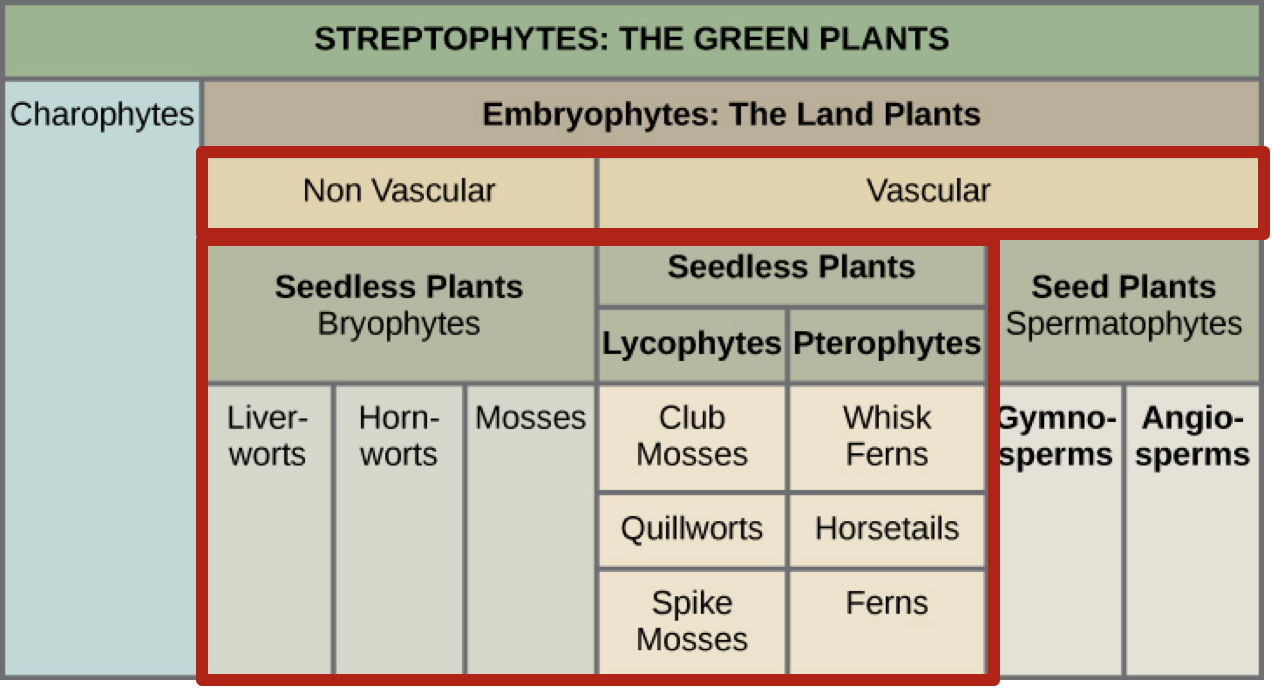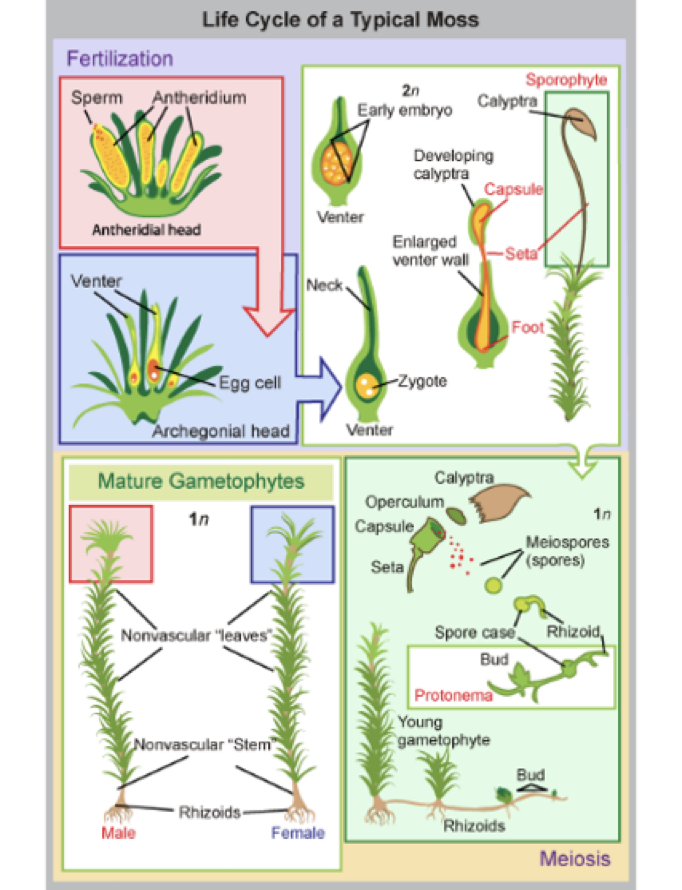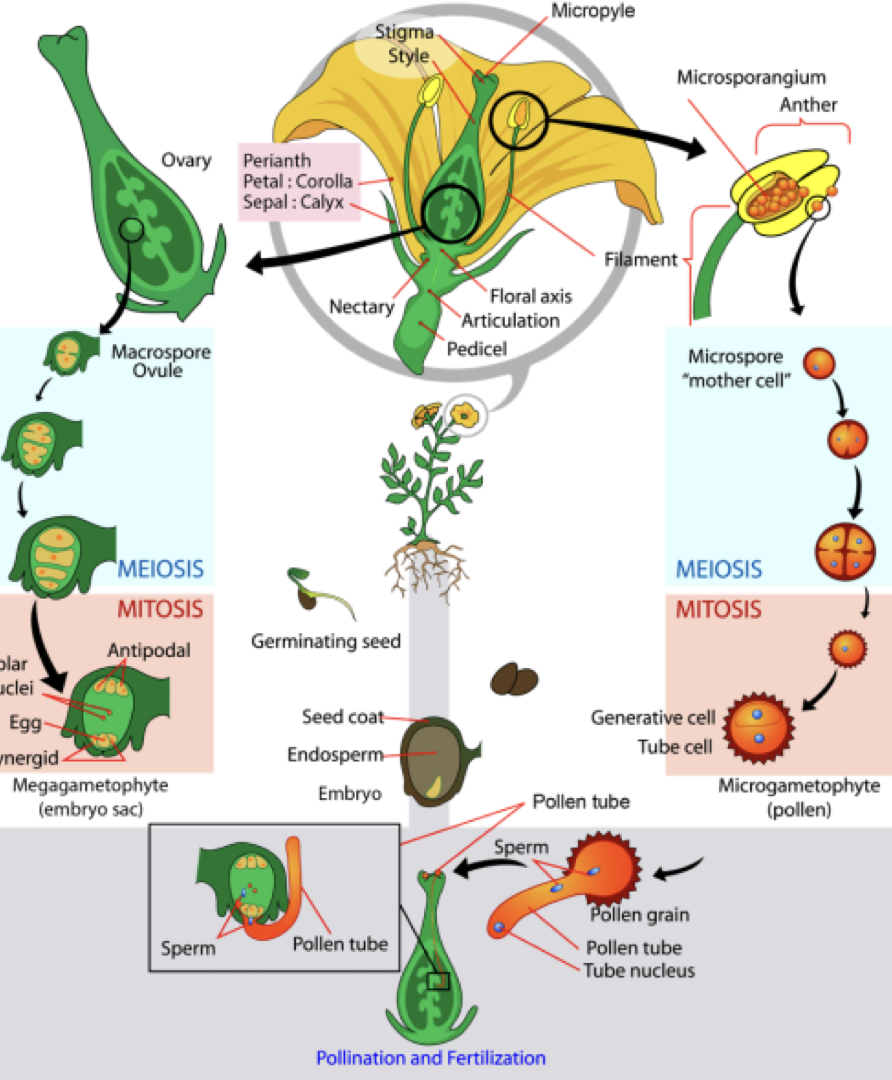Biology 102 exam 2 Richard Mccain
1/234
Earn XP
Description and Tags
I hope this helps someone in the future
Name | Mastery | Learn | Test | Matching | Spaced |
|---|
No study sessions yet.
235 Terms
Protists
Wide range from microscopic, single celled organisms to enormous multicellular
Used as a sort of junk drawer for organisms that don’t fall into animal, plant, or fungi
Why difficult to classify protists
NOT PLANTS
Gametes and Zygotes are not protected from drying out
NOT FUNGI
Do not have chitin in their cell wall
NOT ANIMALS
Do not go through embryonic development
Protists diversity facts
Could be split into as many as a dozen kingdoms (very diverse)
Protists morphology
Most are unicellular, but not all
many have very high level of structural and functional complexity, even if they are just one cell
General biology of the protists
Life cycle
most are free living (non symbiotic living)
some parasitic
asexual reproduction common
sexual reproduction when times are tough
some life cycles simple, some complex
Size
vary in size from microscopic to hundreds of meters
Ecology of Protista
Great and good and great for enviroment
Photoautotrophic forms
produce oxygen
function as producers in both types of water
major component of plankton
serve as food for heterotrophic protists and different animals
Many protists symbionts
ex. coral reefs and protists
Transportation of protists
3 main ways
Paramecium use hair like apendages called cilia
Amoeba uses limb like pseudopodia to anchor itself and then pull itself forward
Euglena uses a whip like tail called flagellum
Metabolism of protists
Could be aerobic or anaerobic
protists that get energy through photosynthesis are called photoautotrophs and have chloroplasts
Heterotrophic consume organic materials for nutrition ex. Saprobes eat dead organisms
Mixotrophs obtain nutrition through either way depending on what is available
Phagocytosis
Happens in usually amoebas
use pseudopods to engulf food inside
after it is digested with hydrolytic enzymes within lysosome
the rest that is not wanted is thrown out of the cell.
Reproduction of protists
Many can do both asexual and sexual reproduction which include budding and binary fission for asexual or meiosis and fer
Sexual reproduction in protists
Used in time of stress as they need to better adapt to an environment
Pros
better genetic diversity
Better adaptation to changing environment
more efficient in getting rid of bad genes
more efficient in getting good genes
produces spores that can resist environmental stress
Cons
energy costly
risk of gene conflicts
time to locate partner
breaks well adapted genomic configs
Asexual reproduction in protists
most common way for reproduction
Pros
good for energy
no risk of gene conflicts
preserves well adapted genome configs
Cons
clones
low diversity for genes
less adaptive to changes in environment
less efficient in getting rid of bad genes
less efficient in getting good genes
Preferred habitat of Protist
prefer the moist or aquatic environments, this includes:
freshwater or marine enviro
damp soil
snow
host animals and plants
dead bodies
Green algae
Chlorophyta
Algae refers to many phyla of protists that photsynthensize
inhabit many enviroments including oceans, freshwater, snowbanks, tree bark, and turtle backs
many are symbionts with fungi, plants, or animals
majority unicellular, but many are filamentous or colonial. some multicellular
plants thought to be from chlorophyta as
they have cell wall that has cellulose
have chlorophylls a and b
store excess food as starch
Red Algae
Rhodophyta
multicellular
live in warmer seawater, some deep as 200m
used in many things
Agar- capsule, dental impressions, cosmetics
Carrageen- emulsifying agent
Porphyra-whats wraps sushi
Brown Algae
Phaeophyta
~1500 species
most in colder ocean water
no unicellular or colonial forms
Morphology
some small forms with simple filaments
large multicellular forms that can exceed 200m
Pigments
Chlorphylls a and c
Fucoxanthin (carotinoid pigment)
excess food stored as carbohydrate called laminarin
Yellow-green Algae
Chrysophyta
Diatoms are most numerous unicellular algae in oceans
significant portion of phytoplankton
Cell wall
two valves, with large valve acting as lid
contains silica
Diatomaceous earth ised as
filtering agents
sound-proofing materials
polishing abrasives
Endosymbiosis
First eukaryote probs came from prokaryote that went through membrane proliferation, the compartmentalization of cellular function(organelles). Mitochondria from aerobic prokaryote and chlorophyll from photosynthetic one
Primary endosymbiotic event
A heterotrophic eukaryote consumed a cyanobacterium
Secondary endosymbiotic event
The cell that came from primary endosymbiosis is consumed by a second cell
Zooflagellates
Colorless heterotrophs
most symbiotic and many parasties
cause diseases like STI’s, severe diarrhea, or Chagas disease
Amoeboids
Rhizopoda
move and ingest food with pseudopods
make use of phagolysosomes for phagocytosis
Ex. entamoeba histolytica
Ciliates
Ciliophora are them most complex of the protozoans
hundreds of cilia beat in rhythmn
most holozoic, eat food whole
divide by transverse binary fission during asexual
two nuclei
micronucleus- heredity
macronucleus- metabolism
Dinoflagellates
exhibit great variety in shape
many encased in cellulose armor and then have two flagella that are within grooves of the “armor”
these flagella cause a spinning motion
bioluminescence is sometimes seen in dinoflagellates
Plasmodial Slime molds
Myxomycota feed like fungi and make spores but no cell wall and have flagellated cells
body in form of plasmodium
diploid, multinucleated, cytoplasmic mass
enveloped in slimy sheath
produces sporangium which produces spores
Cellular Slime Mold
Acrasiomycota feed like fungi and make spores but no cell wall and have flagellated cells
body in the form of indiviudal amoeboid cells
later aggregate into pseudoplasmodium which makes sporangium and spores
Protists are main producers
feed most of the worlds aquatic species directly or indirectly
one half of worlds photosynthesis by various protists
Symbionts protists
can provide nutrition to other organisms through photosynthesis. Ex. coral and protists
Decomposer protists
Saprobes specialize in absorbing nutrients from nonliving organic matter
have the essential function of returning inorganic nutrients to soil and water
part of process of life
Parasitic protists
significant portion are pathogenic parasites that must infect other organisms to survive and propagate
include malaria, and other things in humans
some prey on plants and cause crop destruction
basics of fungi
Mushrooms: the fruiting body of a fungus, containing spores that act similarly to seeds in plants
Hyphae: long thin strands that tangle together to make up mycelium
Mycelium: the main structure of a fungus
Mycorrhiza: in the mycorrhizal fungi, the place where the hyphae attach to plant roots
Habitats of fungi
Fungi prefer moist environments but realllu are everywhere
most members can be found in the forest
Characteristics of fungi
~80,000 species
mostly multicellular eukaryotes that share a way of nutrition
heterotrophs cells release digestive enzymes and then absorb nutrients
most are saprobes
some parasitic
some mutualistic
biggest organism to scale on earth
Fungal Decomposers
fungi are important of ecosystem
release element from decaying matter, making them available to other living organisms
ex. bracket fungi, shelf fungi
evolution of fungi
Plants, animals, and fungi trace their ancestry to protists
molecular data tells that animals and fungi shared a common ancestor after plants evolved
Animals and fungi are more closely related to each other than either is to plants
flagellated unicellular protist, was most likely the common ancestor
Structure of fungi
body(thallus) of most fungi is multicellular mycelium(yeast are unicellular)
Consist of vast network of threadlike hyphae
septate fungi have hyphae with cross walls
Coencytic (aseptate) fungi are multinucleated
hyphae grow from tip
help with absorption
Cell walls with chitin
Excess food stored as glycogen as in animals
Structure of spore generators
Sporangiophore- specialized fungi hyphae, stalk of sporangium
Sporangium- the structure of the enclosure unit where spores are
Spores- reproductive particles of the fungi
Reproduction of fungi
Fungi have both asexual and sexual stages of reproduction
Asexual- mitosis makes spore producing structures which germinate and produce more mycelium (usually involves windblown spores)
Sexual- plasmogamy (fusion of cytoplasm from haploid cells from two different mycelia) into the heterokaryotic stage. Then karyogamy (Nuclei fuse to form a diploid) into zygote(Diploid) stage. Meiosis where haploid spores are formed which germinate a multi cellular mycelium
Unicellular yeasts reproduce by budding
Zygomycota
Zygospore fungi
mainly saprotrophs decomposing animal and plant remains
ex. Rhizopus stolonifer is the bread mold
Chytridiomycota
Considered to be the most primitive fungi (500 million years old)
Chytrids are found everywhere. they synthesize and release digestive enzymes that break down molecules in the protective covers
some are part of the digestive flora of ruminants
microscopic, produce motile spores called zoospores
placed in protista kingdom before
Sac fungi
Ascomyctoa ~60,000 species
most are saprotrophs can digest cellulose, lignin, or collagen
most are composed of septate hyphae
morels and truffles, many plant diseases
Asperigillus and Candida cause serious infections: mycosis
Sac Fungi: Reproduction
Sexual reproduction: Ascus: fingerlike sac that develops during sexual reproduction and produce 8 Ascospores
Asexual reporduction is the norm
Yeast usually reproduce by budding
other ascomycota produce spores called conidia or conidiospores
Sac Fungi: molds
Can be helpful
Aspergillus is green molds used to produce soy sauce and citric acid
Species of penicillium is the source of penicillin
Sac Fungi: yeasts
Yeasts can be beneficial and harmful to humans
Saccharomyces cerevisiae, are added to relatively sterile grape juice to make wine
when yeasts ferment, produce ethanol carbon dioxide
used in genetic engineering experiments
Candida albicans is a yeast that causes fungal infections
oral thrush is common in immunocompromised patients
Club fungi
Basidiomycota ~ 20,000 species
familiar toadstools, mushrooms, bracket fungi: some super poisonous
plant diseases such as the smuts and rusts
Mycelium composed of septate hyphae
Mycorrhizae
Mutualistic relationships between soil fungi and the roots of most familiar plants
give plant greater absorptive surface
help plants acquire mineral nutrients
can be ecto(out) or endo(in)
80-90% plant species have mycorrhizal partners
fungal mycelia use their extensive network of hyphae and large surface area to channel water and minerals from the soil into the plant
in exchange the plant gives the products of photosynthesis to fuel the metabolism of the fungus
Endophytes release toxins that repel herbivores, or confer resistance to environmental stress factors, such as infection by microorganisms, drought, or heavy metals in soil
Lichens
not single organism, but rather an example of a mutualism in which a fungus (Ascomycota/ Basidomycota) lives in close contact with a photosynthetic organism(algae/cyanobacterium)
may be crust-like, hair-like, leaflike
a) upper cortex of fungal hyphae, which provides protection
b) algal zone where photosynthesis
c) medulla of fungal hyphae
d) lower cortex, which also provides protection
e) may have rhinzinae to anchor the thallus to the substrate

Parasitism, pathogens, and commensalism of fungi
fungi engage in both types of relationships, but fungi parasites can have lots of economic or environmental damage
plant infections from fungi
many plant pathogens are fungi that ruin crops and cause food spoilage and rotting of stored crops
Fungal infections
Common examples are ringworm
Trichophyton violaceum, causes superficial mycoses on scalp
Histoplasma Capsulatum is an ascomycete that infects airways and causes symptoms similar to influenza
Intro to seedless plants
Ancestors of Plants were green algae
Many evolutionary restraints from water to land:
Avoid drying out
needing structural support
capturing sunlight
dispersal of reproductive cells
Most seedless plants require moistness
Plant Phylogeny(seedless plants)

Alternations of generations
Haplontic refers to life cycle is where there is a dominant haploid stage
Diplontic refers to life cycle in which diploid is a dominany stage
Most plants switch between the two
Gametophyte-Haploid or Sporophyte-Diploid
Land Plant adaptations
Early land plants not more than a few inches off ground, they were nonvascular
Through the need to grow larger, plants made more rigid molecules, vascular tissues, that allowed for transport of water and other molecules through the plant
Xylem
Conduct water and minerals from soil up to the shoot
lignified for mechanical strength and impermeable to water
strengthened xylem can result in very large plants
Phloem
transport products of photosynthesis throughout the plant
consists of sieve elements (conducting cells) and supportive cells
Waxy Cuticle
protects leaves and stem from dessication, but stops CO2 from coming into leaves
Stomata
breaks in the waxy cuticle that allow for CO2 that can open or close
Protective flavonoids
Protect from photodynamic damage from UVB
Poisonous secondary metabolites(alkaloids)
deter predators
Sweet/nutritous metabolites
aids in pollination and dispersal of reproductive material through animals
Streptophytes
Land plants/closely related green algae
(Charophytes) are part of new mpnophyletic group “Streptophyta”
both contain carotenoids and chlorophyll a and b
both store carbohydrates as starch
Nonvascular plants/ bryophytes
Byrophytes thrive in moist habitats, some live in deserts
generally lack ligin and dont have vascular tissue, water and nutrients circulate inside specialized conducting cells
All conspicuous vegetative organs are gametophytes. sporophyte barely noticeable
three phyla: Hepaticophyta (Liverworts), Anthrocerotophyta(Hornworts), Bryophyta (mosses)
Reproduction of Bryophytes
gametophyte is dominant
haploid egg and sperm\
flagellated sperm will swim to the egg
fertilization ends in sporophyte
Sporophyte is dependent on gametophyte

Vascular tissue
Tissue consists of conducting cells, tracheids and supportive filling tissues, parenchyma
Roots
Thin Rhizoids attach bryophytes to the substrate but dont provide strong anchor nor good absorption
true roots allow for an extensive network to water sources and stabilization for the plant
most form symbiotic relationship with mycorrhiza fungi or nitrogen-fixing bacteria in roots of legume plants
Leaves, Sporophylls, Strobili
Appearance of true leaves improved photosynthetic efficiency is the third inovations of seedless vascular plants< besides sporophytes and vascular tissue
Micophyll
first type of leaf that is small and has single unbranched vein that runs through the center of the leaf
Megaphylls
Larger leaves with a pattern of branching veins
Sporophylls
Leaves that are modified to bear sporangia
Strobili
cone-like structures that contain sporangia, mainly being the pine cone
Seedless vascular plants
Diploid sporophyte is the dominant phase, , reproduction still depend on water during fertilization, thus they like it damp
include : Club mosses, whisk ferns, horsetails, and ferns
Club Mosses
the earliest group of seedless vascular plants
small evergreen plants consisting of a stem and microphylls
none are true mosses or byrophytes
Horsetails
Thin leaves originating from joint on plant
once used as scrubbing brushes because of silica in epidermal cells
Whisk ferns
Psilotum nudum
Conspicuous green stems with knob shaped sporangia
lack both root and leaves
DNA analysis say they are related to ferns
Ferns
Most readily recognizable seedless vascular plants
Considered most advanced seedless vascular plants, very close to seed plants
some live in dry, most in moist
sporophyte is dominant stage in life cycle,Fronds
Sori, are small bumps with sporangium on the underside of fern frond
Importance of seedless plants
Mosses operate and help the tundra
byrophtes make soil more amenable to other plants
ferns contribute to environment: weathering of rock,accelerating making topsoil, and slowing down erosion
water ferns have nitrogen fixing bacteria and restore this important nutrient
dried peat moss used as fuel as renewable resource
florist uses sphagnum to maintain moisture in flowers
Evolution of seed plants
Gymnosperms and Angiosperms
evolved from spore-bearing plants known as progymnosperms
Angiosperms are most recently evolved
Evolution of pollen and seeds
Seed
protects and provides food for embryo
Dormancy lets seed survive until hatching at the right moment
Seed dispersal enhanced by fruits that coevolved with animals
Pollen
Dispersal of sperm not dependent on water
More seed evolution
Embryo protected by inegument
Extra layer or two of sporophyte tissue
Hardens into seed coat
Also contains food supply for embryo
Evolution of seed plant gametophytes
2 kinds
Male(Micro) gametophytes
within pollen grains
dispersed by wind or pollinator
no need for water
Female(mega) gametophytes
develop within an ovule
enclosed within diploid sporophyte tissue in angiosperms
Five phyla seed plants
Gymnosperms
Coniferophyta
Cycadophyta
Gnetophyta
Ginkophyta
Angiosperms
Anthophyta
Gymnosperms
“Naked seeds”
Seperate female and male gametes
pollination by wind
lack flowers and fruits of angiosperms
all have ovule exposed on a scale
Conifers
Coniferophyta
spruces,pines,firs,cedars, and others
Cycads
Cycadophyta
Slow growing gymnosperms of tropical and subtropical regions
sporophytes resemble palm trees
Gnetophytes
Gnetophyta
only gymnosperms with vessels in their xylem
-contain three genera
Ephedra
Gnetum
Welwitschia
Ginkgophytes
Ginkgophyta
only one living species remain
flagellated sperm
dioecious
Male and female reproductive structures form on different trees
Angiosperms
Flowering plants
monocots
dicots
Angiosperm life cycle

Difference between Monocot and dicot
1 cotyledons vs 2
Parallel veins vs netlike veins
vascular bundles complexly arranged vs in a ring
fibrous root system vs taproot
floral leaves in multiple of threes vs 4’s or 5’s
Monocots do not produce true word while Dicots do
True wood continued
true wood is made through secondary growth that expands the girth of the plant and creates true wood which proliferating xylem.
Features of the animal kingdom
Multicellularity
Complex tissue structure
Heterotrophic
active movement
diversity in form and size
Most exhibit sexual reproductionI(not sponges)
offspring go through developmental stages
determined/fixed body plan
Complex Tissue structure
Unique intracellular communication(gap Junctions)
connective tissues
epithelial tissues
nervous tissues
muscle tissue
Animal reproduction
Early development after zygote forms
Cleavage(series of mitotic cell division)
cells continune to divide and/or rearrange
Blastula
migration of cells-6 to 32-cell hollow ball
blastocoel is internal cavity
Gastrulation-forms gastrula
sets up formation of ectoderm and endoderm germ layers
in most animals, mesoderm within remaing blastocoel
Features used to classify animals
symmetry
number of tissue layers
origin of mouth and smell
body plan and cavities
body symmetry
Asymmetrical
Porifera(sponges)
Radial Symmetry
arrangement around central axis
oral vs aboral sides
good for stationary or planktonic lifestyle
cnidarians, ctenophores
Bilateral
divides body into right and left halves
allows for sense organs in head (cephalization)
suited for all other animals and moving forward
Embryological development (tissues and symetry)
parazoa(beside animals)
no true tissues or symmetry
sponges(porifera)
Eumetazoa(true animals)
remaining animals with distinct tissue
Embryological development (germ layers)
Radiata-diploblasts
two germ layers- ectoderm and endoderm
radial symmetry / Cnidarians, ctenophores
Bilaterata- triploblasts
three germ layers- ectoderm, endoderm, and mesoderm
bilateral./ all other animals
Endoderm
inner lining of most digestive tract organs, trachea, lungs
Mesoderm
all muscle, bone, cartilage, blood, most other visceral organs